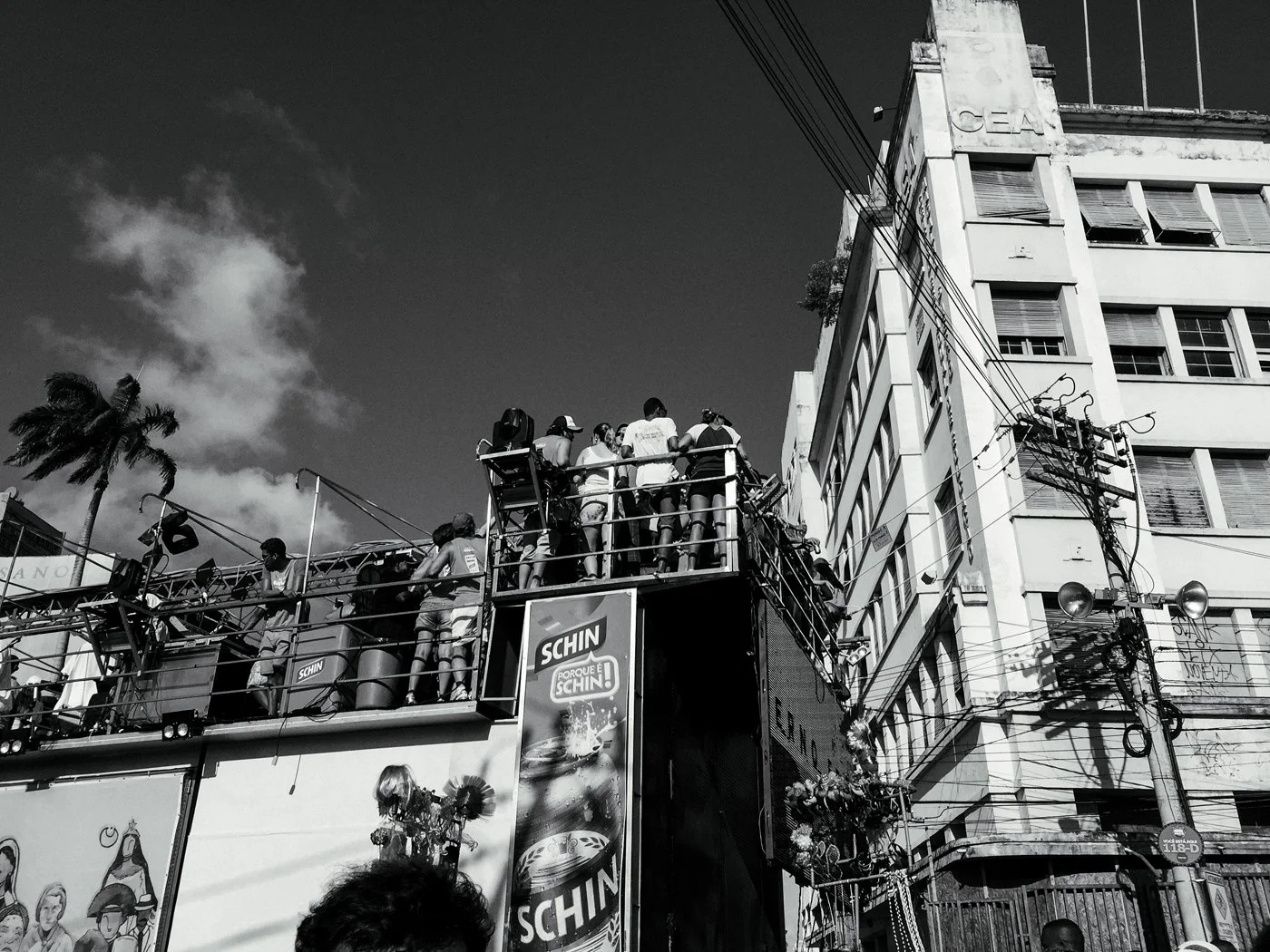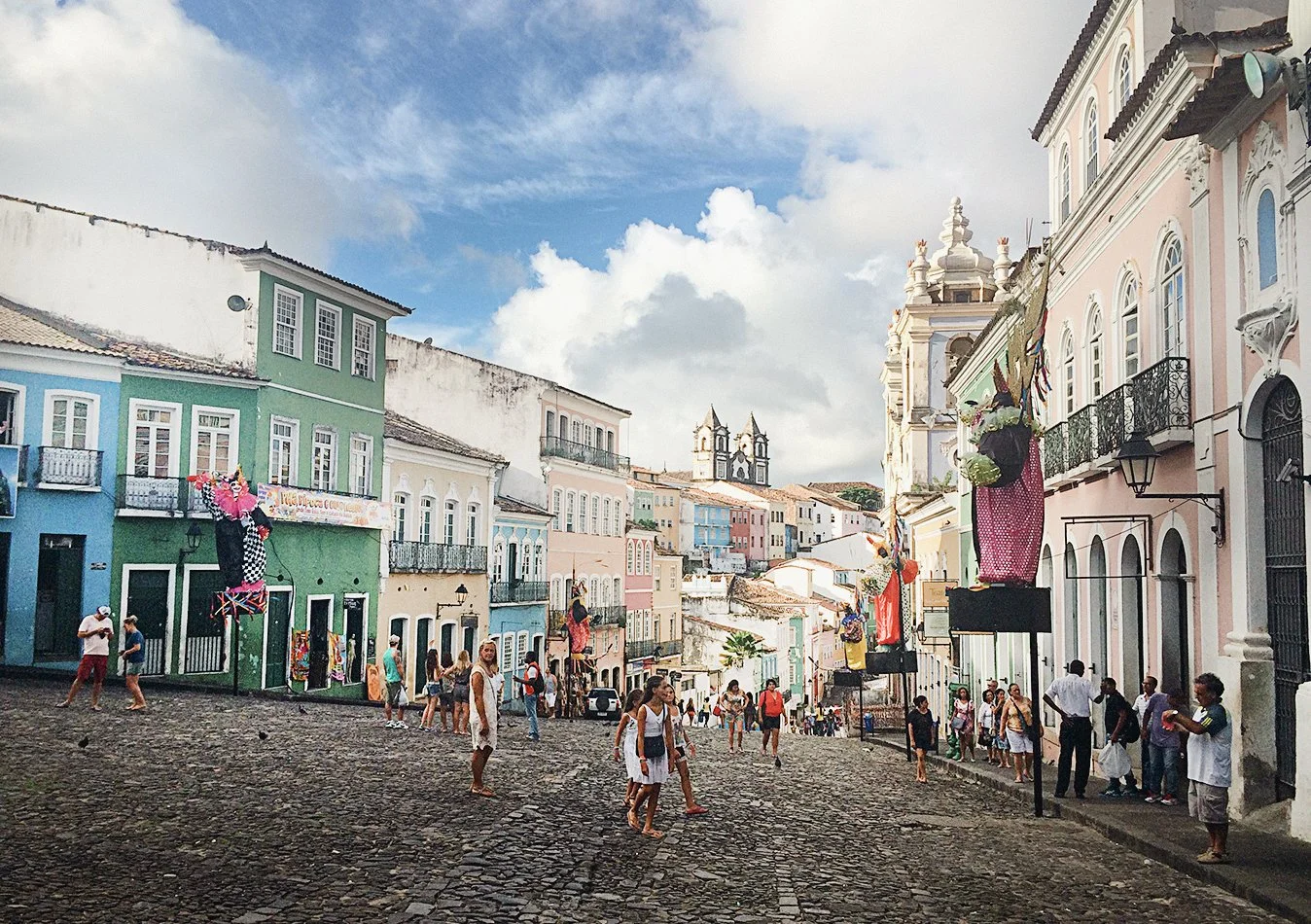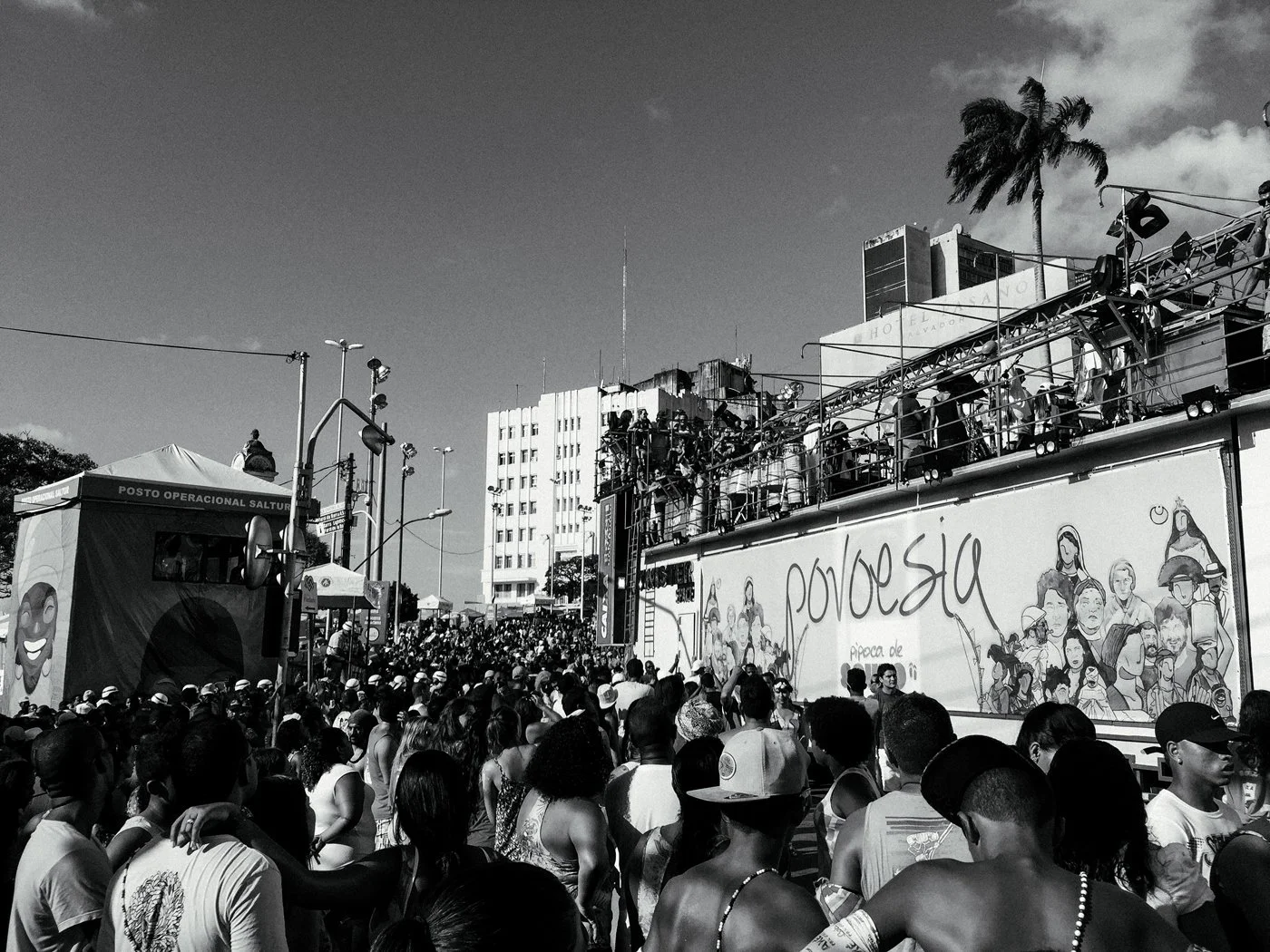Forget Rio. Salvador is where the party’s at
Carnival in Salvador, Bahia. Image by Vinicius Tupinamba
Every year, more than two million revellers attend the world’s biggest party at Carnival in Salvador, Brazil.
The crowd is frenetic, surging forward in a collective stomping of feet and bobbing of heads and waving of hands. Swept up in the throng, I join in the singing: “Yo yo yo yo-yo”, my voice muted by the roar of sound around me.
"We'll be in the pipoca,” my partner Jorge told me earlier, as we jumped out of the taxi and began the short walk to Largo do Campo Grande to join the start of the parade.
Pipoca means popcorn. Now I understand what he meant. It’s a pressure cooker here, people bouncing like popping kernels in a pan - a hot, carnal mix of skin-on-skin, ear-splitting acoustics and wild, unabashed exuberance.
In Salvador, capital of Brazil’s sun-drenched, northeastern state of Bahia, locals laugh as they tell me: “Cariocas (residents of Rio) don’t know how to party!” Sure, Carnival in Rio is undeniably iconic and spectacular, but Salvador’s Carnival offers a different experience – something grittier, rowdier and arguably more authentic.
Unlike Rio, where the most popular way to take part in Carnival is to watch the samba school parades in the Sambódrome, or to buy a costume and join in the dance competitions, in Salvador, it’s all about the blocos – frenzied street parties with thousands of people following huge, slow-moving trucks fitted with enormous sound systems and their favourite bands playing on top.
These trucks, known as trio eletricos wend their way through the city streets along three main routes, each of which takes between five to seven hours to complete.
We’re following the trio eletrico of local singer Saulo performing Axé, a high-energy music style blending Afro-Caribbean rhythms with Brazilian street music and modern pop.
Carnival-goers party on top of a trio eletrico.
The music epitomises the vibe of this part of the world, with its myriad of cultural influences. Founded by the Portuguese in 1549, Salvador was Brazil’s first capital, and the destination for an estimated 1.2 million slaves brought from Africa to work on the region’s sugar plantations.
Today, this tropical city remains the heart of Afro-Brazilian culture, and despite its sobering history, its people exude a laid-back, carefree spirit.
There’s certainly a sense of camaraderie as we weave our way through the crowd. People are dancing, singing, laughing and flirting, and look like they’re having the time of their lives doing it.
Occasionally, though, I have to fend off a stray hand. On advice from locals, I’m not carrying a purse or handbag, and I have my phone safely tucked away in a belt under my clothes.
But I’m also told there’s usually no major trouble at Carnival due to the large police presence - every few hundred metres, the crowd parts in front of us, I’m pulled to one side and a line of police, helmeted and armed with batons, march purposefully past. Before long, they’re absorbed into the crowd behind us, and the partying continues.
The parade takes us past crumbling buildings in pastel salmon and turquoise hues, examples of the 17th and 18th century Portuguese colonial architecture found throughout the city.
Salvador’s historic centre, Pelourinho, with its Renaissance and Baroque-style buildings and elaborate gold churches, was considered to hold such outstanding universal value that it was declared a world heritage site by UNESCO in 1985.
Pelhourinho, the historic city centre of Salvador, Bahia, Brazil.
Yet it has a dark past: Pelourinho, meaning pillory, was named after the wooden whipping post where slaves were once brutally punished for transgressions.
Nowadays, the colourful city centre charms tourists with its cobblestone lanes, lively plazas, street stalls and souvenir shops.
As we make our way along Avenida Sete de Setembro, locals hang out of terrace windows above us, waving the Brazilian flag and cheering us on.
The sky is an intense blue, broken up by silhouettes of palm trees.
Huge, burly Afro-Brazilian men, bedecked in pearls and beads, and wearing the beautiful white Baiano dresses usually reserved for women serving acarajé, a local Bahian street food, leap around taunting and teasing us, laughing and blowing kisses from their red lipstick-stained mouths.
I marvel at the ceaseless energy of the Brazilians; renowned for their ability to party, it’s little wonder Carnival lasts almost a week, with many locals taking part in the festivities every day.
Music and dance is part of the fabric of life here; everyone seems to have an innate rhythm, with the ability to move seamlessly from one dance style to the next as the music changes.
After hours of trying to keep up with my Brazilian friends, my legs are aching and dehydration kicks in.
I’ve avoided drinking too much water because there are lines of people waiting to use the portable toilets situated off the main street, and I don’t want to lose my group in the parade.
Besides, the stench coming from the cubicles is overwhelming. I buy a bottle of water from a street vendor and take a few sips.
Soon, the trucks start spraying water, mercifully cooling down the crowd and causing the skin of thousands of bodies around me to glisten in the sun.
Carnival crowds gather at Praça Castro Alves
The parade ends at Praça Castro Alves, overlooking the magnificent Baia de Todos os Santos - Bay of All Saints - the largest bay in Brazil.
A sea of humanity stretches out before us; beyond that, the huge expanse of ocean sparkles in the afternoon light.
After more dancing and revelry, the crowd begins to dissipate, so we trudge back along the cobblestone streets in search of a local eatery.
As the sun dips low in the sky, we devour acarajé and slurp down the sugary Guarana Antarctica, Brazil's favourite soft drink, while trails of party-goers head home to recuperate; no doubt they'll be back to do it all again tomorrow.




